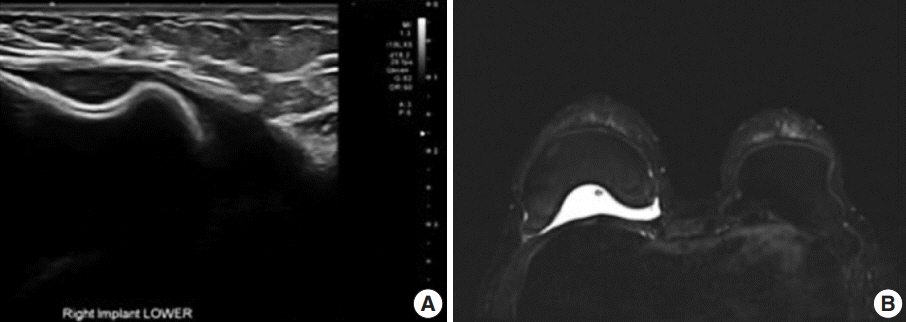J Pathol Transl Med.
2020 Sep;54(5):432-434. 10.4132/jptm.2020.07.01.
Breast implant–associated anaplastic large cell lymphoma: the first South Korean case
- Affiliations
-
- 1Department of Pathology, Asan Medical Center, University of Ulsan College of Medicine, Seoul, Korea
- 2Department of Oncology, Asan Medical Center, University of Ulsan College of Medicine, Seoul, Korea
- 3Department of Plastic Surgery, Asan Medical Center, University of Ulsan College of Medicine, Seoul, Korea
- KMID: 2506277
- DOI: http://doi.org/10.4132/jptm.2020.07.01
Figure
Cited by 1 articles
-
Comment on “Breast implant-associated anaplastic large cell lymphoma: the first South Korean case”
Il-Kug Kim, Tae Gon Kim
J Pathol Transl Med. 2021;55(6):419-420. doi: 10.4132/jptm.2021.09.21.
Reference
-
References
1. Di Napoli A, Pepe G, Giarnieri E, et al. Cytological diagnostic features of late breast implant seromas: from reactive to anaplastic large cell lymphoma. PLoS One. 2017; 12:e0181097.
Article2. Quesada AE, Medeiros LJ, Clemens MW, Ferrufino-Schmidt MC, Pina-Oviedo S, Miranda RN. Breast implant-associated anaplastic large cell lymphoma: a review. Mod Pathol. 2019; 32:166–88.
Article
- Full Text Links
- Actions
-
Cited
- CITED
-
- Close
- Share
- Similar articles
-
- Breast implant-associated anaplastic large cell lymphoma in an Asian patient: The first case report from Thailand
- Dermatofibroma in Patient with Relapsing Primary Cutaneous Anaplastic Large Cell Lymphoma
- Breast implant-associated anaplastic large-cell lymphoma (BIA-ALCL)
- Metallic implant-associated lymphoma: ALK-negative anaplastic large cell lymphoma associated with total knee replacement arthroplasty
- Comment on “Breast implant-associated anaplastic large cell lymphoma: the first South Korean case”




